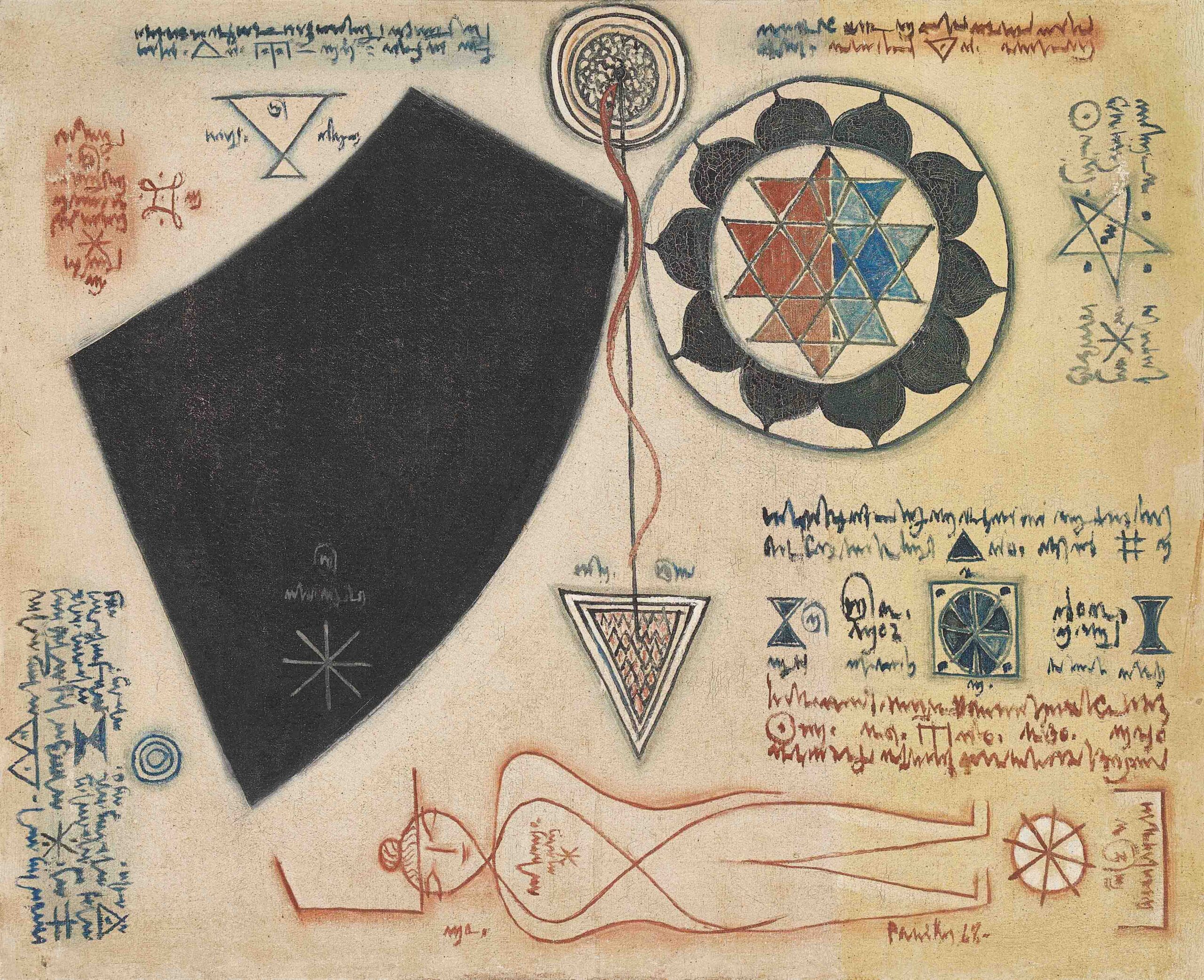The Madras Art Movement, which emerged in the 1960s in Chennai, South India, was a significant regional modern art movement deeply rooted in the cultural heritage of the region. This movement was born in post-independence India, a period of intense cultural and socio-political transformation. As India sought to forge a new identity after centuries of colonial rule, Indian artists sought to establish a unique identity distinct from colonial influences. The Madras Art Movement reflected the desire among artists to break free from traditional conventions and explore more contemporary, experimental forms of expression. The movement was a response to the necessity of developing a new visual language that could adequately convey the complexities of a rapidly changing society.
The Government School of Arts and Crafts, Chennai (Madras) founded in 1850 and later helmed by visionary leaders such as Devi Prasad Roy Chowdhury and K.C.S. Paniker, became the epicentre of this movement. Roy Chowdhury, the school’s first Indian principal, introduced a fine arts curriculum that shifted the focus from colonial classical study to a more empirical and perceptual approach. This laid the groundwork for what would become a distinct style in Indian modern art. This approach encouraged the exploration of local traditions and vernacular art, allowing artists to blend traditional Indian themes with modernist techniques, thus creating a unique visual language that resonated with the cultural identity of South India.
Under K.C.S. Paniker, the collage and movement gained momentum, with Paniker introducing the study of modern European masters while emphasizing the exploration of vernacular art forms. This blend of traditional and contemporary techniques became a defining characteristic of the Madras Art Movement. Artists were encouraged to engage with local crafts and symbols, leading to a unique visual language that combined regional motifs with modernist abstraction.
The movement drew from both Western modernism resulting in a rich and diverse body of work that was both innovative and deeply rooted in the local culture. Central to the movement was K.C.S. Paniker, who is often regarded as its father figure. Paniker’s vision of synthesizing tradition with modernity provided the philosophical and aesthetic foundation for the movement. He encouraged artists to engage with Indian cultural themes while experimenting with contemporary artistic techniques. This approach resonated with many other artists who became key figures in the movement.
A. Ramachandran, one of the prominent artists associated with the Madras Art Movement, exemplified this blend of tradition and innovation. His figurative paintings, deeply engaged with mythological themes, were known for their vibrant colours and intricate details, reflecting the movement’s commitment to creating a new visual language that was both modern and distinctly Indian. Similarly, S.G. Vasudev’s work, which explored themes of nature and rural life, added to the movement’s thematic diversity. Vasudev’s use of bold lines and simplified forms, rooted in his connections to Karnataka, illustrated the movement’s broader exploration of regional identities and cultural motifs.
Notable artists such as L. Munuswamy and S. Dhanapal, who played key roles in the movement, developed a style that reflected the movement’s core principles. Munuswamy’s works, for example, often featured bold, abstract forms inspired by local culture, while Dhanapal, a sculptor, focused on integrating traditional South Indian sculptural techniques with modernist aesthetics. Other artists, like K. Adimoolam, explored figurative and abstract styles, respectively, drawing from the rich visual and cultural traditions of South India.
The Madras Art Movement was characterized by its wide range of themes and artistic techniques. Artists sought to reconcile traditional Indian art forms with contemporary styles, resulting in a unique hybrid aesthetic. Many drew inspiration from Indian mythology, folklore, and rural life, infusing their works with narrative depth and cultural symbolism. This thematic richness was matched by an embrace of experimentation with form, abstraction, and colour, as artists pushed the boundaries of conventional practices and sought new ways to express the complexities of modern life.
The impact of the Madras Art Movement on Indian art was significant and far-reaching. Artists associated with the movement gained both national and international recognition, contributing significantly to the global visibility of Indian contemporary art. Moreover, the movement paved the way for subsequent generations of Indian artists, who were inspired to explore new artistic vocabularies and engage with socio-political issues through their work.
The movement also saw the establishment of the Cholamandal Artists’ Village in 1966 by Paniker, which provided a communal space for artists to live and work, free from commercial pressures. This village became a hub for the Madras Art Movement, fostering creativity and collaboration among artists. The movement’s emphasis on authenticity and regional identity set it apart from other contemporary Indian art movements, such as the Progressive Artists’ Group in Bombay, which leaned more towards international modernism.
The legacy of the Madras Art Movement lies in its successful fusion of local tradition with modern artistic expression, creating a distinct regional voice in Indian modern art. The movement not only contributed to the development of modern art in South India but also laid the foundation for future generations of artists who continue to draw inspiration from the region’s rich cultural heritage.









